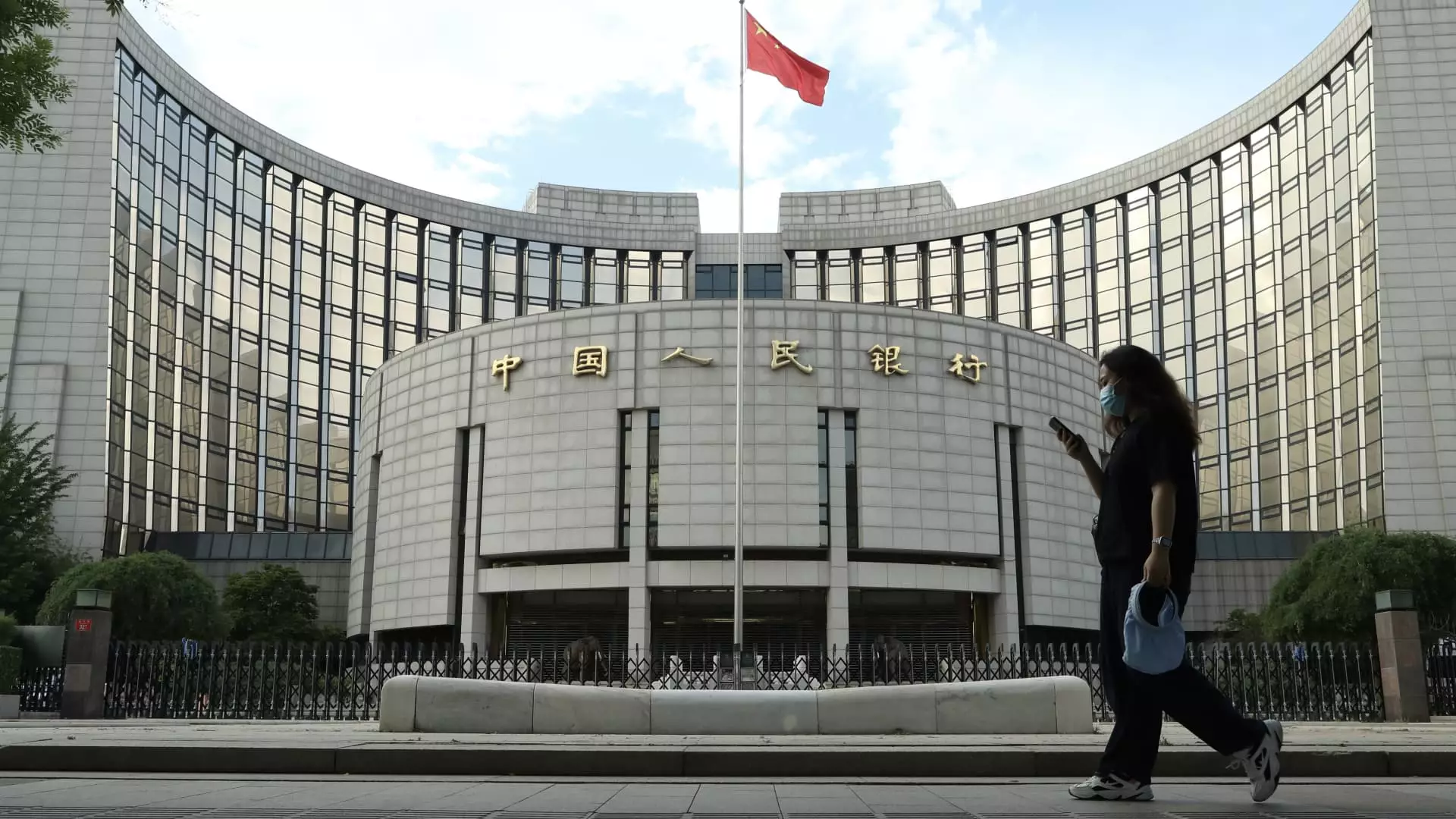On Monday, the People’s Bank of China (PBOC) made a decisive move by reducing its primary lending rates. The one-year loan prime rate (LPR) saw a decrease of 25 basis points, bringing it down to 3.1%. Simultaneously, the five-year loan prime rate was trimmed to 3.6%, both adjustments aimed at stimulating economic activity within the nation. This decision serves as a pivotal moment to assess whether monetary easing alone suffices in counterbalancing the broader challenges facing China’s economy.
The one-year LPR, directly affecting corporate borrowing and household loans, is essential for assessing the financial landscape for businesses and consumers. Meanwhile, the five-year LPR serves as a critical benchmark for mortgage rates, impacting the housing market in a country where real estate plays a significant role in economic growth. The context of these cuts must also acknowledge the broader economic indicators, which reflect a complex mix of both opportunity and adversity.
Central bank governor Pan Gongsheng had hinted at these cuts during a forum in Beijing, suggesting expectations for a reduction between 20 and 25 basis points. Additionally, he introduced the prospect of lowering the reserve requirement ratio (RRR) for banks by a further 25 to 50 basis points by the end of the year, contingent upon liquidity conditions. The seven-day reverse repurchase rate and medium-term lending facility rate will also experience reductions, reinforcing the message of easing monetary conditions.
Despite the anticipated nature of the loan prime rate decreases, the implications stretch beyond mere adjustments in borrowing costs. As Shane Oliver, AMP’s chief economist, pointed out, even though monetary stimulus is indeed taking place in China, such measures alone may not suffice to rejuvenate the economy, which is grappling with a significant lack of demand. Here, a clear divide emerges: while easier borrowing might facilitate business operations, it will not inherently spur consumption, which is essential for a robust economic environment.
The sentiments surrounding China’s economy reflect concerns centered on diminished consumer confidence alongside a property market in distress. The imperative for fiscal stimulus becomes apparent, as traditional monetary strategies may fail to address underlying demand-side issues. This notion is echoed by various economists stressing that simply reducing borrowing costs does little to enhance consumer sentiment or drive spending when foundational issues remain unaddressed.
According to Zhiwei Zhang, the high real interest rates present a hurdle that may require additional cutbacks in the future. The context of global monetary policy changes, specifically the Federal Reserve’s direction, leads to heightened expectations that China may undertake more aggressive rate cuts in the coming year. Last month’s RRR cut of 50 basis points marked an initial step in a series of support measures designed to stabilize a “prolonged property crisis” and the overall economic stagnation.
The PBOC’s strategic actions come on the heels of recent economic data that offers a glimmer of hope. China reported a better-than-expected GDP growth rate of 4.6% year-on-year for the third quarter, alongside positive trends in retail sales and industrial production for September. While these figures might bolster optimism, they should not distract from the overarching challenges that persist, ultimately necessitating a multi-faceted approach combining both monetary and fiscal tools.
The benchmark lending rate cuts by the PBOC represent a calculated effort to navigate a turbulent economic landscape. The ability of these measures to engender a sustainable recovery relies heavily on complementary fiscal policies aimed at addressing the inherent lack of demand. Only time will tell if these adjustments mark the beginning of a significant economic turnaround, or if further robust interventions will be necessary to genuinely stimulate growth in the world’s second-largest economy. In the evolving narrative of China’s economy, the integration of diverse strategies will be crucial in creating a resilient and responsive economic framework.


Leave a Reply